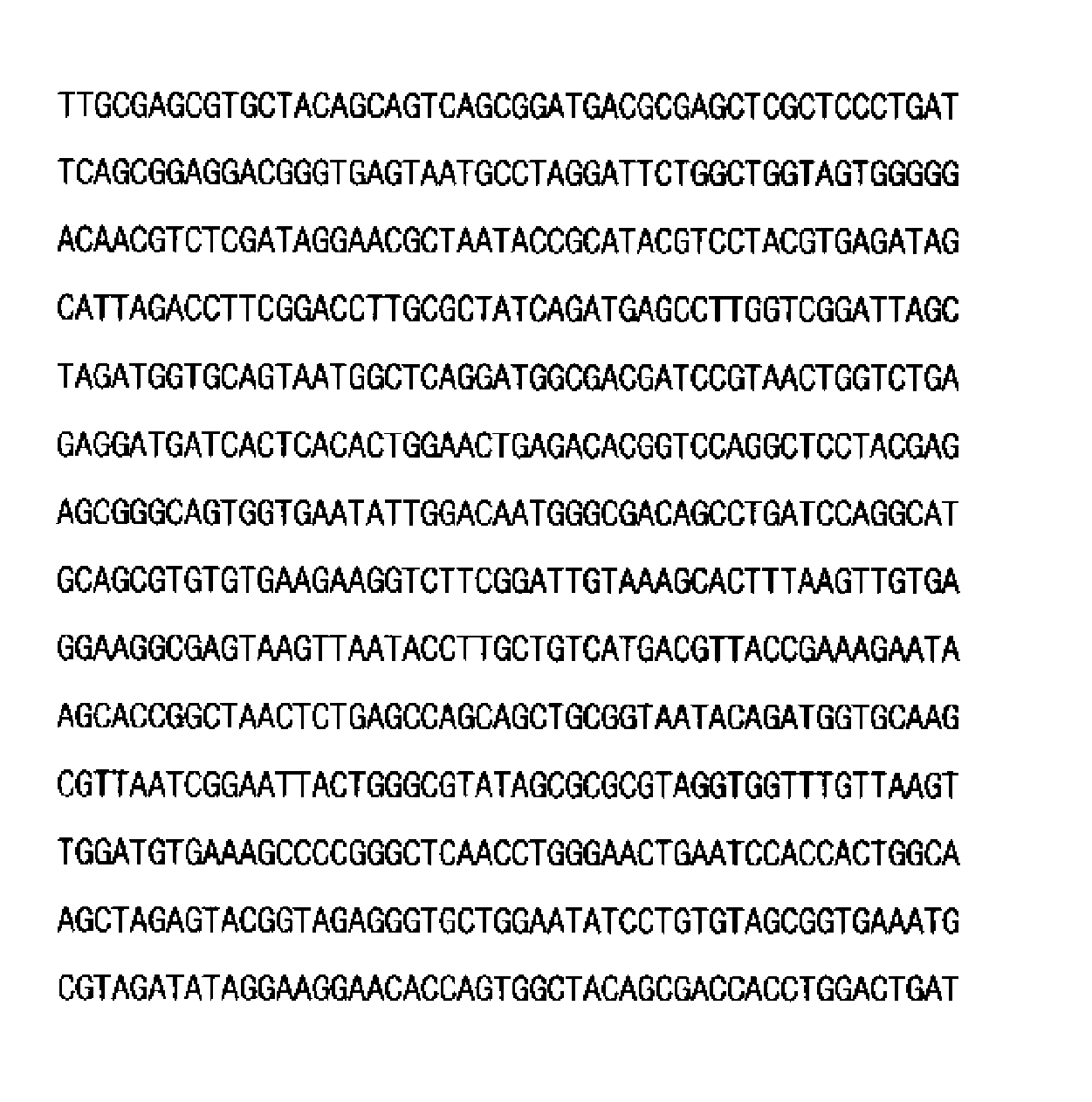Pseudomonas SP. HN-72 and purification method of 2,6-naphthalene dicarboxylic acid using the same
a technology of pseudomonas sp. and dicarboxylic acid, which is applied in the direction of microorganisms, microorganisms, microorganisms, etc., can solve the problems of presenting problems, risking explosion danger, and unsuitable use of ndc in view of the use of existing pet production facilities, and achieve excellent conversion effects
- Summary
- Abstract
- Description
- Claims
- Application Information
AI Technical Summary
Benefits of technology
Problems solved by technology
Method used
Image
Examples
example 1
Isolation of Strain
[0025]Soil was sampled from wastewater treatment plants, oil reservoirs and gas stations located in Gyeonggi Do, Korea. 5 g of each of the soil samples was added to 50 ml of a 0.85% physiological saline solution, shaken and filtered to obtain a filtrate. The filtrate was diluted to an appropriate level, plated on an LB solid medium containing a cNDA, and cultured in an incubator at 30° C. As a result of the culture, 200 microorganisms were isolated.
[0026]Only microorganisms that decompose 2-naphthaldehyde having a formyl group at the same position as that of FNA were primarily screened in accordance with the following procedure. First, each of the 200 microorganisms was inoculated onto 1 ml of an LB liquid medium and cultured with shaking at 200 rpm and 30° C. for 16 hours.
[0027]The cultures were centrifuged to collect the corresponding bacteria. The collected bacteria were suspended in 1 ml of a 0.85% physiological saline solution. Separately, 0.2 ml of a 2-napht...
example 2
(1) Identification of Microorganism
[0030]16S rDNA partial sequencing of the strain isolated in Example 1 was performed to identify the strain. The results are shown in FIG. 1. According to the results, the strain was identified as a bacterium belonging to the genus Pseudomonas. The strain was termed Pseudomonas sp. HN-72 and deposited at GenBank of the Korea Research Institute of Bioscience and Biotechnology (KRIBB), which is an international depository authority, under the accession number of KCTC-10819BP on Jun. 21, 2005.
[0031]The morphology and biochemical characteristics of the strain (Pseudomonas sp. HN-72) were determined, and the results are summarized in Tables 3 and 4.
[0032]
TABLE 3Characteristics of Pseudomonas sp. HN-72TestCharacterizationGram stainNegativeCell morphologyRodOptimal growth temperature25-30° C.OxidasePositiveDenitrificationNegativeGelatin degradationNegativeStarch degradationNegativeCatechol degradationNegative
[0033]
TABLE 4Utilization of carbon sources by Ps...
example 3
Influence of Reaction Temperature
[0038]cNDA reaction solutions having the composition indicated in Table 6 were reacted at 30, 35, 40 and 50° C. to confirm the optimal reaction temperature of the cNDA reaction solutions. At this time, an enzyme solution was prepared by inoculating the Pseudomonas sp. HN-72 onto an LB liquid medium, culturing the inoculum in a shaking incubator at 30° C. for 16 hours, and centrifuging the culture to collect the cultured bacteria, washing the collected bacteria with a 0.85% physiological saline solution, and suspending the washed bacteria in a 0.85% physiological saline solution. The final concentration of the bacteria in the reaction solutions was adjusted to 0.05 μl ml. As apparent from the results of Table 7, a higher reaction temperature was advantageous for the reaction and a temperature of 40° C. or higher did not cause any substantial change in the reaction.
[0039]
TABLE 6CompositionContentRemarks50 mM KH2PO4—KOH42.5ml(pH 8.0)cNDA2.5g* Final conc...
PUM
| Property | Measurement | Unit |
|---|---|---|
| temperature | aaaaa | aaaaa |
| temperature | aaaaa | aaaaa |
| temperature | aaaaa | aaaaa |
Abstract
Description
Claims
Application Information
 Login to View More
Login to View More - R&D
- Intellectual Property
- Life Sciences
- Materials
- Tech Scout
- Unparalleled Data Quality
- Higher Quality Content
- 60% Fewer Hallucinations
Browse by: Latest US Patents, China's latest patents, Technical Efficacy Thesaurus, Application Domain, Technology Topic, Popular Technical Reports.
© 2025 PatSnap. All rights reserved.Legal|Privacy policy|Modern Slavery Act Transparency Statement|Sitemap|About US| Contact US: help@patsnap.com

